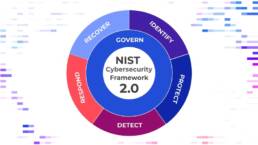Azure Cosmos DB
|
 |
 |
Atlassian Confluence
|
Credentials Pilfered From 87,000
|
 |
 |
Uptick In
|
Security Tip Of The MonthSummary: On September 1st, a fired credit union employee pled guility to deleting 21G of confidential data as well as anti-ransomware software files from the company shared drive after the IT department failed to revoke access following her termination. Due to insufficient backups, the credit union ended up paying over $10,000 to restore data following the loss. The LockBit ransomware group attempted to recruit insiders to help deploy malware on corporate networks. Vindictive former employees or employees motivated financially can pose a threat to internal security. Why It matters:Employees, vendors, and partners have insight into how a company operates and can use that knowledge maliciously. Best practices include provisioning account permissions with the least privilege necessary to complete routine tasks. Zyston monitors access to high-privilege groups as well as suspicious mass deletions to stay abreast of potential data loss and privilege escalation. Additionally, it is important to automate identity and access management where possible to ensure that employees are terminated properly across all company resources.
|
 |








